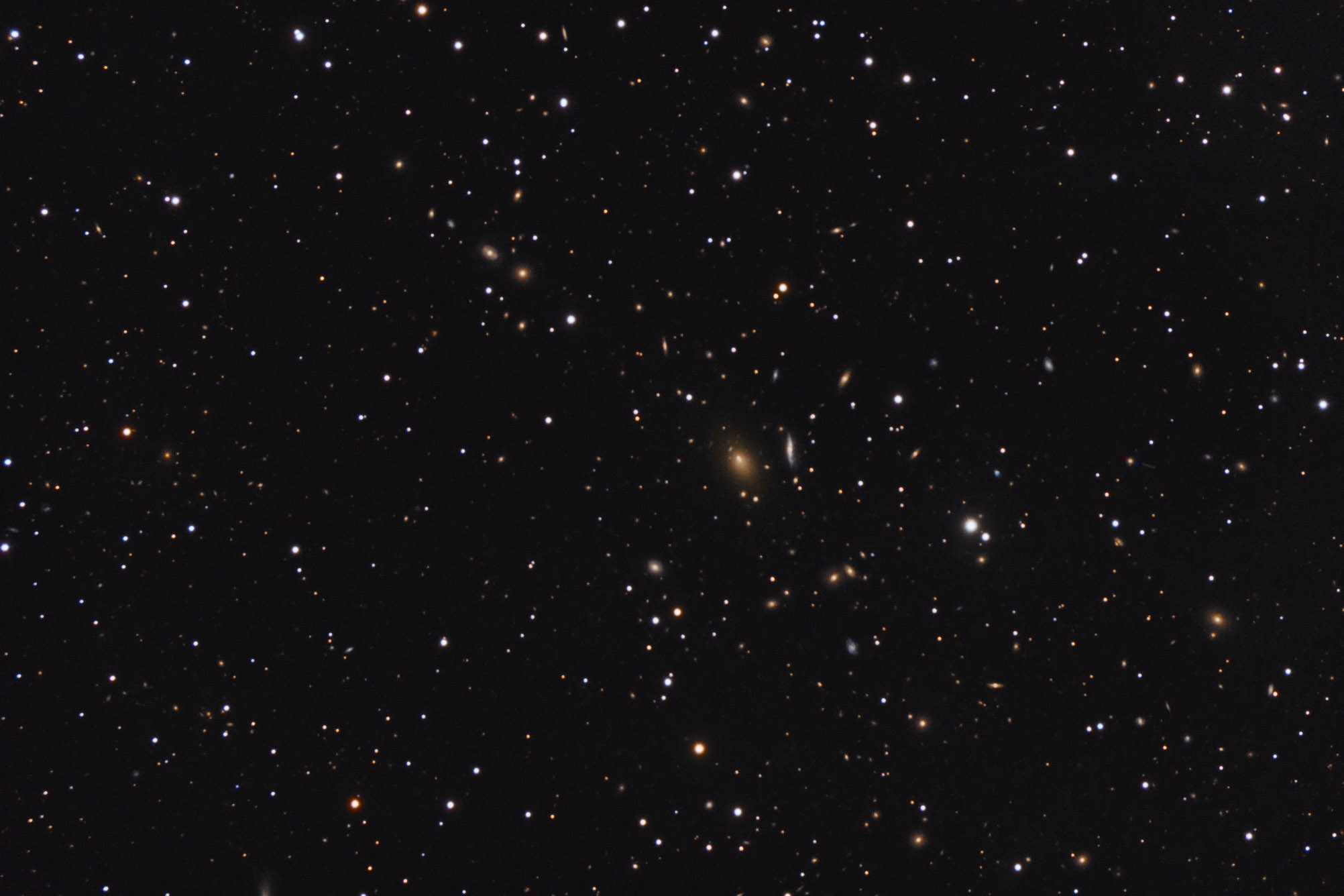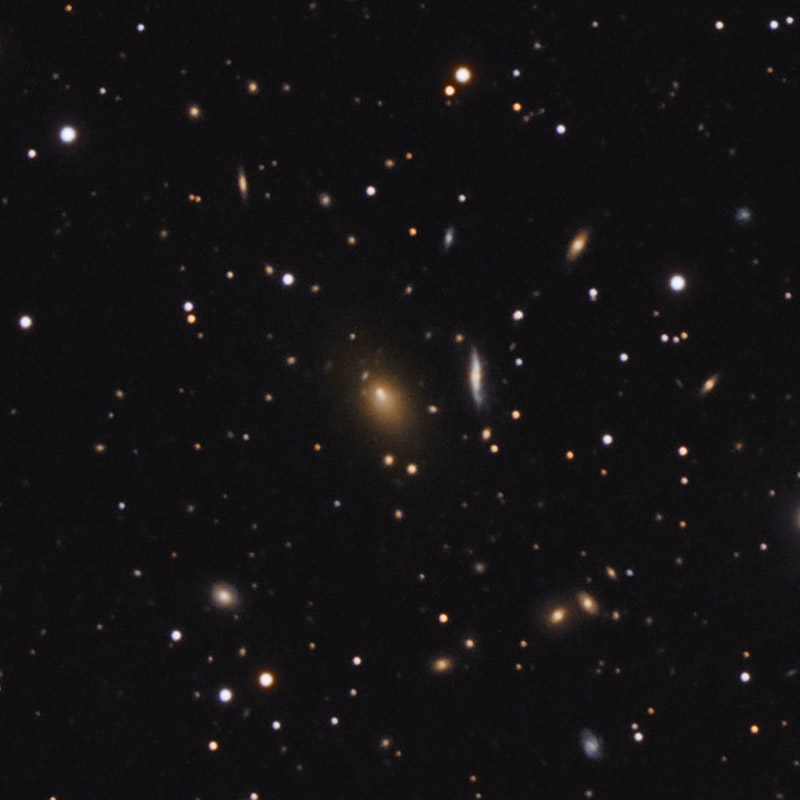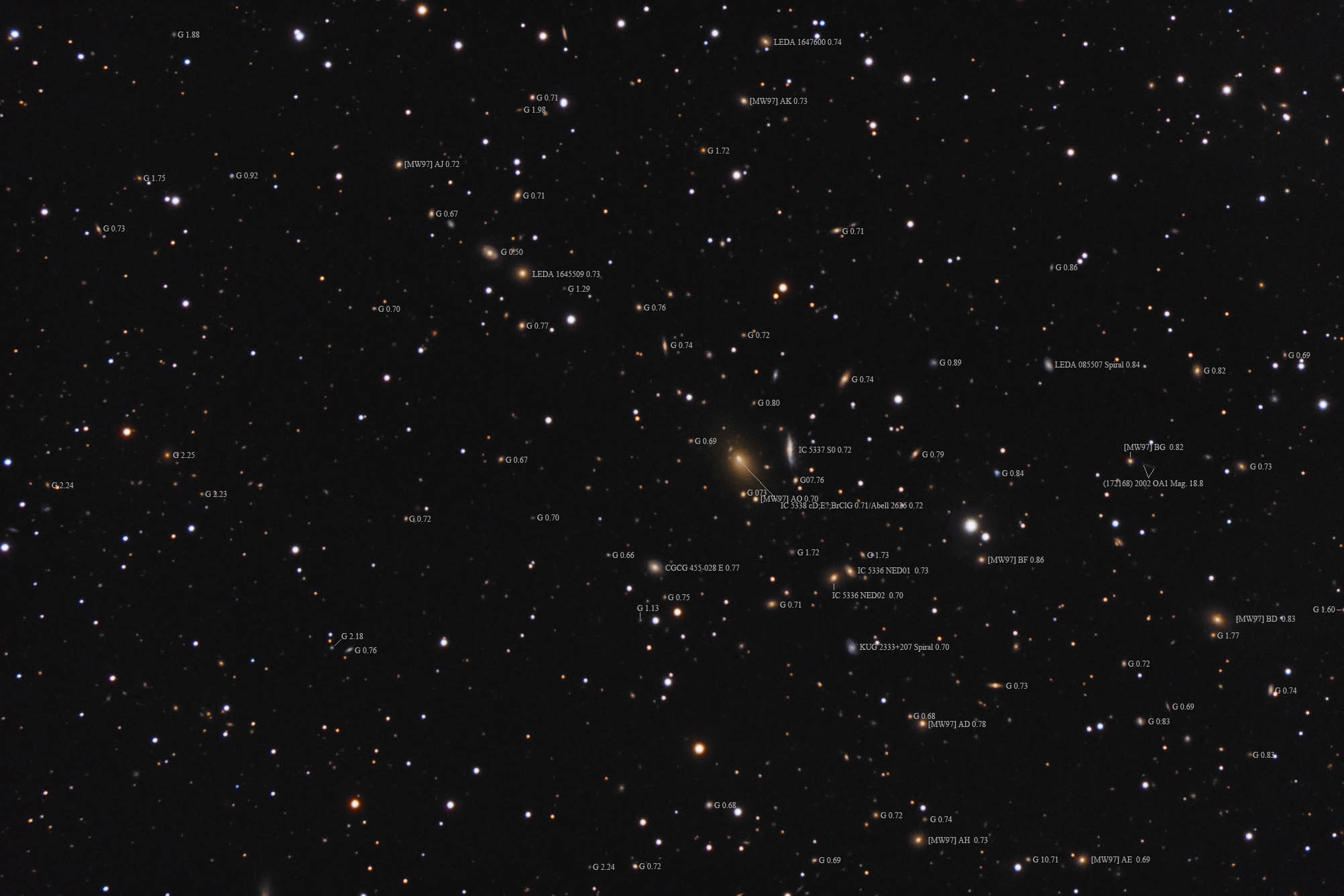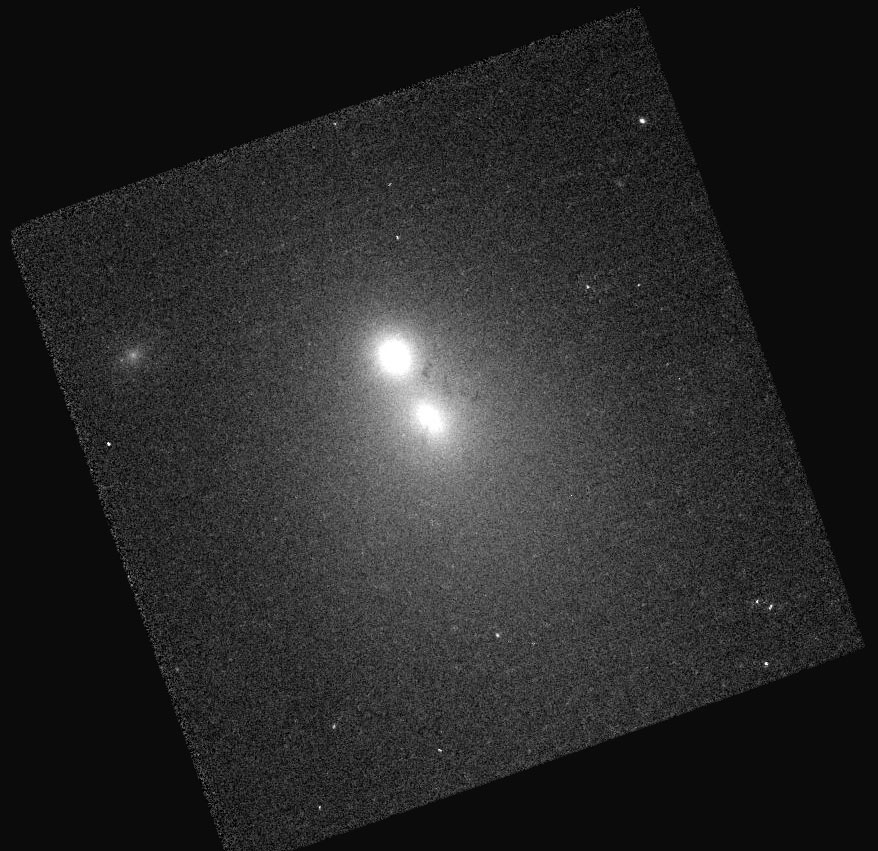| Description | Images |
Object name: IC5337Designation(s): IC5337, IC5338, IC5336, ABELL2626, IC5337-IC5338-ABELL2626IC 5337 and 5338 form the core of the Abell 2626 galaxy cluster. The cluster is located almost dead center in the Great Square of Pegasus and is about 720 million light-years distant. The cluster is listed as richness class 0 meaning it has 30 to 49 members. Its diameter is listed as 79 arc minutes, so covers an area 8 times that of my frame yet I show well over 50 galaxies that appear to be members of the cluster that have distance estimates. Many more have no distance estimates but likely are also cluster members. That leaves me wondering how this count is arrived at. Related Designation(s):1RXS J233631.0+210848, 2MASS J23362504+2109029, 2MASX J23362506+2109028, 2MASX J23363057+2108498, 2MASXi J2336250+210902, 2MASXi J2336305+210849, 2XMM J233624.7+210902, 2XMM J233630.4+210846, 2XMMp J233630.4+210846, 3C 464, 4C +20.57, ABELL 2626, ABELL 2626:[AAV2011] BCG, ABELL 2626:[B90], ABELL 2626:[CAE99] a, ABELL 2626:[SPS89] 10, ABELL 2626:[SPS89] 11, ABELL 2626:[ZBO89] O1, ABELL 2626:[ZBO89] R1, ABELL 2626A:[CAC2009] BCM, ABELL2626, AGC 330572, CGCG 2333.9+2052, CGCG 2334.0+2052, CGCG 455-025, CGCG 455-026, Cul 2334+208, EXSS 2333.9+2052, GALEX J233630.6+210848, GALEXASC J233630.44+210846.8 , GCwM 272, IC 5336, IC 5337, IC 5338, IC5336, IC5337, IC5338, KUG 2333+208, MCG +03-60-012, MCG +03-60-013, MCXC J2336.5+2108, NSA 152044, NVSS J233630+210845, PGC 071875, PGC 071884, RBS 2028, RX J2336.5+2108:[ZEH2003] 03 , RXC J2336.5+2108, SCL 213 NED04, SSTSL2 J233625.04+210902.5, SSTSL2 J233630.47+210846.6, TXS 2333+208, UGC 12703, UZC J233625.1+210901, UZC J233630.5+210842, VLSS J2336.4+2108, WBL 719, WBL 719-001, WBL 719-002, WINGS J233625.05+210902.5, WINGS J233625.06+210902.6, WINGS J233630.49+210847.3, WINGS J233630.50+210847.4, ZwCl 2332.8+2027 NED02, [LPP2009] 2333+208(1), [LVO2003] J233631.1+210857, [MB2007] J354.1268+21.1459, [PMP2006] J233630.5+210847.1 , [SRS94] 233359.32+205207.8, [WSB2008] 06, [WSB2008] 08, | Permanent link: https://images.mantrapskies.com/catalog/OTHER/IC5337-IC5338-IC5336-ABELL2626/IC5337L4X10RGB2X10.JPG Permanent link: https://images.mantrapskies.com/catalog/OTHER/IC5337-IC5338-IC5336-ABELL2626/IC5337L4X10RGB2X10CROP125.JPG |



